Deforestation, the large-scale removal of forests, is a global issue that has far-reaching impacts on our planet. It’s not just about the loss of trees; it’s about the loss of ecosystems, biodiversity, and the vital services these forests provide.
Forests are often referred to as the “lungs of the planet” because they absorb carbon dioxide—a greenhouse gas—and release oxygen. This process is essential for life on Earth. According to the Food and Agriculture Organization of the United Nations, the world lost 178 million hectares of forest between 1990 and 2020, an area about the size of Libya.
This loss is not evenly distributed, with the largest losses occurring in Africa and South America. The main drivers of deforestation are agriculture (both commercial and subsistence), logging, and infrastructure development.
The effects of deforestation are not confined to the areas where it occurs. Forests play a crucial role in the global carbon cycle, acting as a sink by absorbing carbon dioxide from the atmosphere. When forests are cut down, not only is this carbon sink lost, but the carbon stored in the trees is released back into the atmosphere, contributing to climate change.
| Year | Global Forest Area (million hectares) | Annual Deforestation Rate (million hectares) |
|---|---|---|
| 1990 | 4128.5 | 13.6 |
| 2000 | 3999.3 | 12.9 |
| 2010 | 3922.3 | 7.6 |
| 2020 | 3855.1 | 6.7 |
Unmasking the Silent Killer: The Effects on Our Planet
The effects of deforestation are manifold and devastating. Beyond the loss of trees and the biodiversity they support, deforestation disrupts water cycles, accelerates soil erosion, and contributes to climate change.
Forests play a crucial role in maintaining the planet’s water cycle. They absorb rainfall, refill aquifers, and release water vapor that forms clouds and precipitation.
When forests are removed, this cycle is disrupted, leading to drier climates and an increased risk of drought. Soil erosion is another significant consequence of deforestation. Forests help to stabilize soils and prevent erosion by wind and water.
When trees are removed, soils are left exposed and can be easily washed away by rain. This not only degrades the land, making it less productive for agriculture but also leads to the sedimentation of rivers and streams, affecting aquatic life.
The contribution of deforestation to climate change cannot be overstated. Forests act as a carbon sink, absorbing more carbon dioxide than they release. When forests are cut down, this carbon is released back into the atmosphere, contributing to global warming.
According to the World Bank, deforestation is responsible for about 15% of global greenhouse gas emissions.
| Effect | Description |
|---|---|
| Disrupted Water Cycle | This leads to drier climates and an increased risk of drought |
| Soil Erosion | Degrades land and leads to sedimentation of rivers and streams |
| Climate Change | Contributes to global warming by releasing stored carbon dioxide |
The Green Lungs of the Earth: How Deforestation is Choking Our Planet
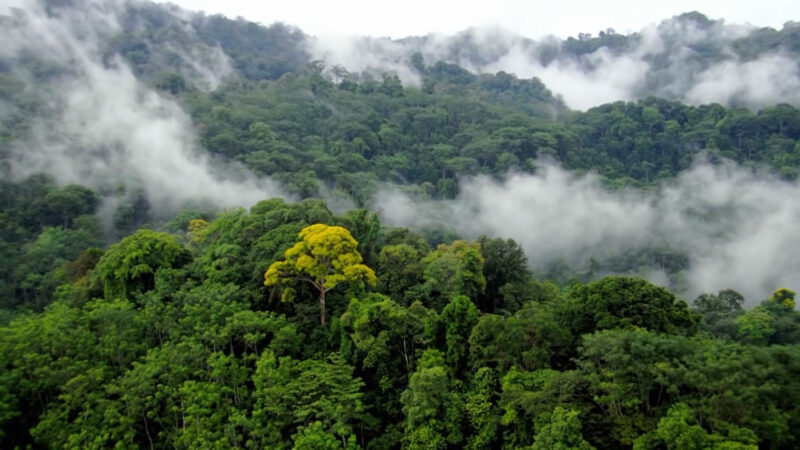
Forests are often referred to as the “lungs of the Earth” because they play a vital role in oxygen production and carbon dioxide absorption. Through the process of photosynthesis, trees take in carbon dioxide and release oxygen.
This not only provides the oxygen that we breathe but also helps to regulate the planet’s carbon cycle and mitigate climate change. However, deforestation is choking these green lungs. The cutting down of forests results in the release of carbon stored in trees into the atmosphere, adding to the issue of global warming.
Moreover, the loss of forests means less carbon dioxide is absorbed from the atmosphere, exacerbating the problem. The impact on biodiversity is also severe. Forests are home to more than 80% of the world’s terrestrial biodiversity.
When forests are removed, many species lose their habitats, leading to declines in population and even extinction. According to the World Wildlife Fund, 27% of the Amazon biome will be without trees by 2030 if the current rate of deforestation continues.
| Impact | Description |
|---|---|
| Climate Change | Contributes to global warming by releasing stored carbon dioxide and reducing carbon absorption |
| Biodiversity Loss | This leads to habitat loss, population declines, and extinctions |
The Alarming Rate: A Threat to Our Planet’s Survival

The rate at which deforestation is occurring is alarming. According to Global Forest Watch, the world lost 12 million hectares of tree cover in 2020 alone, equivalent to 30 soccer fields every minute.
This rapid loss of forests is a threat to our planet’s survival, as forests play a crucial role in maintaining the planet’s climate, water cycle, and biodiversity. The main drivers of deforestation are agriculture, logging, and infrastructure development.
Agriculture accounts for about 80% of deforestation worldwide, with commercial agriculture responsible for about half of that. Logging, both legal and illegal, also contribute significantly to forest loss. Infrastructure development, such as roads and cities, further drives deforestation by opening up previously inaccessible areas to exploitation.
The rate of deforestation varies by region, with the highest rates occurring in the tropics. The Amazon rainforest, often referred to as the “lungs of the Earth,” is particularly at risk.
According to the World Wildlife Fund, the Amazon could lose more than a quarter of its trees by 2030 if the current rate of deforestation continues.
| Driver | Percentage of Deforestation |
|---|---|
| Agriculture | 80% |
| Logging | 10% |
| Infrastructure Development | 10% |
The Role of Deforestation in Climate Change: An Unseen Danger
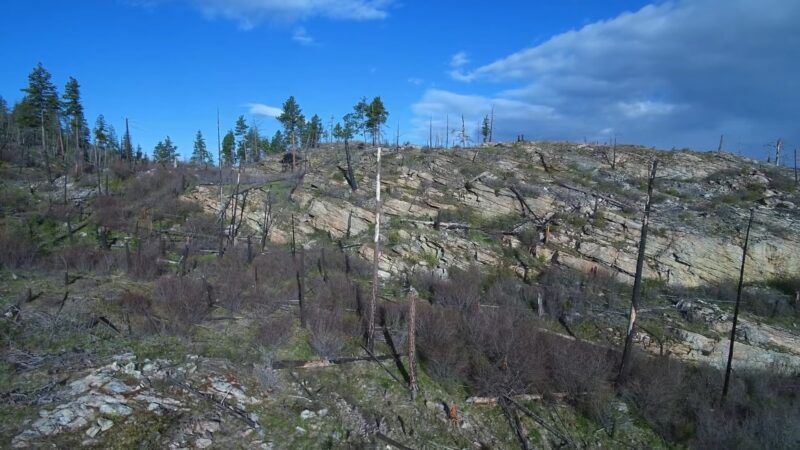
Deforestation plays a significant role in climate change, an unseen danger that threatens our planet’s survival. Forests act as a carbon sink, absorbing more carbon dioxide than they release.
When forests are cut down, this carbon is released back into the atmosphere, contributing to global warming. According to the Intergovernmental Panel on Climate Change, deforestation is responsible for about 10% of all human-induced greenhouse gas emissions.
Moreover, the loss of forests means less carbon dioxide is absorbed from the atmosphere, exacerbating the problem. Climate change, in turn, can lead to further deforestation.
As the planet warms, forests become more susceptible to pests, diseases, and wildfires, which can lead to further forest loss. This creates a vicious cycle, where deforestation contributes to climate change, which in turn leads to more deforestation.
| Impact | Description |
|---|---|
| Greenhouse Gas Emissions | Contributes to global warming by releasing stored carbon dioxide |
| Reduced Carbon Absorption | Exacerbates global warming by reducing the amount of carbon dioxide absorbed from the atmosphere |
| Increased Forest Vulnerability | This leads to further forest loss due to pests, diseases, and wildfires |
The Unseen Enemy of Biodiversity
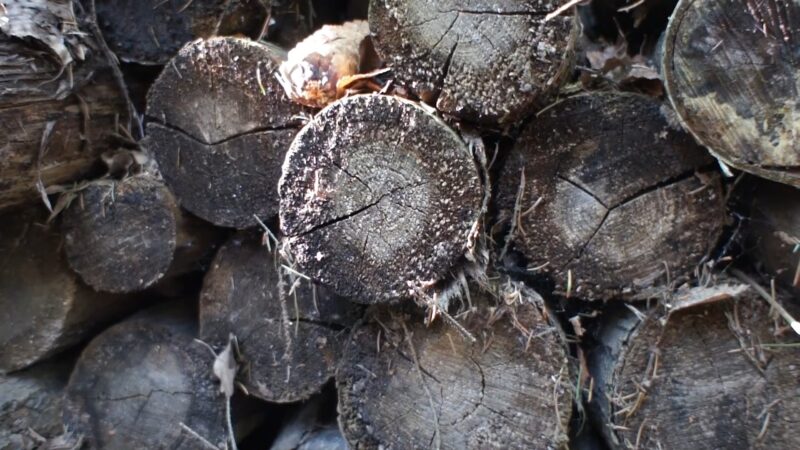
Deforestation is a major threat to biodiversity. Forests are home to more than 80% of the world’s terrestrial biodiversity, providing habitat for a vast array of plants, animals, and microorganisms. When forests are removed, many species lose their habitats, leading to declines in population and even extinction.
According to the World Wildlife Fund, 27% of the Amazon biome will be without trees by 2030 if the current rate of deforestation continues. This could lead to the extinction of up to 10% of Amazonian species.
Moreover, the loss of biodiversity can have cascading effects on ecosystems, disrupting food chains and affecting ecosystem services such as pollination, water purification, and climate regulation.
The True Cost of Deforestation: An Ecological and Economic Perspective
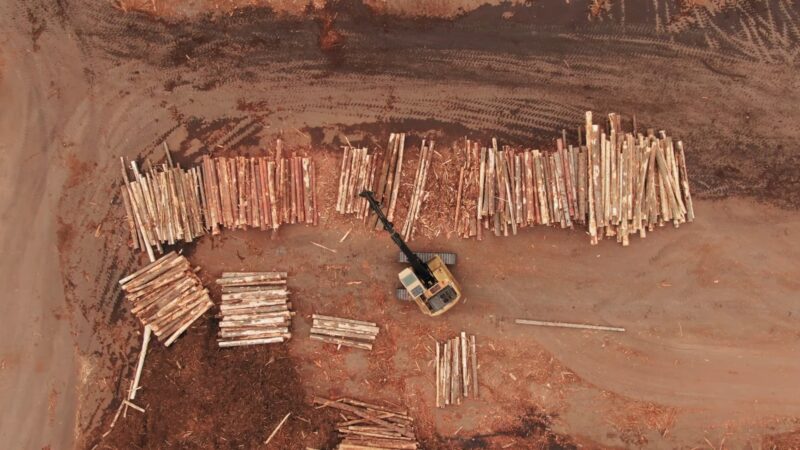
The cost of deforestation is immense, both ecologically and economically. Ecologically, the loss of forests leads to the loss of biodiversity, disruption of water cycles, soil erosion, and contribution to climate change.
Economically, forests provide a wide range of goods and services that are often not accounted for in economic systems. Forests provide timber and non-timber forest products, such as fruits, nuts, and medicinal plants.
They also provide ecosystem services, such as carbon sequestration, water purification, and soil stabilization. According to a study published in the journal Nature, the value of these ecosystem services is estimated to be in the trillions of dollars annually.
However, these values are often not considered in decision-making processes, leading to the undervaluation and overexploitation of forests. This is a major challenge in addressing deforestation, as it often makes economic sense to convert forests into agricultural land or to extract timber, even though this leads to long-term ecological and economic costs.
| Ecosystem Service | Estimated Value (USD per year) |
|---|---|
| Climate Regulation | 1 trillion |
| Water Regulation | 360 billion |
| Soil Formation | 75 billion |
| Biodiversity | 490 billion |
The Domino Effect of Deforestation on Global Ecosystems

Deforestation has a domino effect on global ecosystems. The loss of one forest can have cascading effects on ecosystems around the world.
For example, forests play a crucial role in the global carbon cycle. When forests are cut down, the carbon stored in the trees is released back into the atmosphere, contributing to climate change. This, in turn, can affect ecosystems around the world, from coral reefs suffering from ocean acidification to tundra ecosystems thawing due to rising temperatures.
Moreover, forests are home to a vast array of species, many of which are not found anywhere else. When forests are removed, these species can be lost forever, leading to a loss of biodiversity. This loss of biodiversity can have cascading effects on ecosystems, as species interactions are disrupted.
Finally, forests play a crucial role in the water cycle. They absorb rainfall and release water vapor that forms clouds and precipitation.
When forests are removed, this cycle is disrupted, which can affect rainfall patterns and lead to drier climates and an increased risk of drought.
| Effect | Description |
|---|---|
| Climate Change | Contributes to global warming and affects ecosystems around the world |
| Biodiversity Loss | This leads to a loss of species and disrupts ecosystems |
| Disrupted Water Cycle | Affects rainfall patterns and leads to drier climates and increased risk of drought |
Deforestation and Its Impact on Indigenous Communities
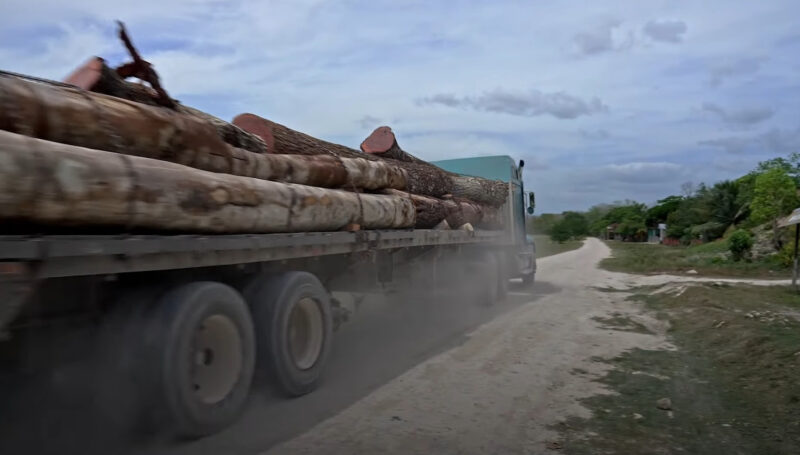
Deforestation has a significant impact on indigenous communities, who often rely on forests for their livelihoods and cultural practices. According to the World Bank, about 1.6 billion people depend on forests for their livelihoods, many of whom are indigenous peoples.
Forests provide food, medicine, and materials for shelter and clothing. They also have cultural and spiritual significance for many indigenous communities.
When forests are removed, these communities can lose their livelihoods and their cultural heritage. Moreover, indigenous communities often play a crucial role in forest conservation.
They have a deep understanding of their local ecosystems and have developed sustainable ways of using and managing them. However, their rights to their lands are often not recognized, leading to their displacement and the loss of their traditional knowledge and practices.
| Country | Indigenous Land (million hectares) | Deforestation Rate (hectares/year) |
|---|---|---|
| Brazil | 117.0 | 26300 |
| Peru | 13.5 | 14800 |
| Colombia | 34.0 | 8300 |
The Role of Consumer Choices in Driving Deforestation
Consumer choices play a significant role in driving deforestation. Many of the products we consume daily, such as beef, soy, palm oil, and wood, are major drivers of deforestation.
For example, the expansion of cattle ranching is the largest driver of deforestation in the Amazon, while palm oil production is a major cause of forest loss in Southeast Asia. Moreover, the demand for these products is often driven by consumers in developed countries, while the impacts of deforestation are felt by local communities and ecosystems in developing countries.
This creates a disconnect between the consumption of products and the environmental impacts associated with their production. However, consumers also have the power to drive change.
By choosing products that are sustainably sourced and certified as deforestation-free, consumers can help to reduce the demand for products that drive deforestation.
| Commodity | Percentage of Global Deforestation |
|---|---|
| Beef | 41% |
| Soy | 25% |
| Palm Oil | 10% |
| Wood | 24% |
Solutions: How We Can Help Heal the Planet’s Lungs
There are many solutions to deforestation, ranging from policy measures to changes in consumer behavior. On the policy side, measures such as enforcing land rights, especially for indigenous communities; implementing and enforcing sustainable forestry practices; and creating protected areas can help to reduce deforestation.
On the consumer side, choosing products that are sustainably sourced and certified as deforestation-free can help to reduce the demand for products that drive deforestation. Moreover, reducing meat consumption, especially beef, can help to reduce the demand for land for cattle ranching, a major driver of deforestation.
Restoration of degraded forests is another important solution. Reforestation and afforestation can help to restore the ecological functions of forests and sequester carbon, helping to mitigate climate change.
To increase your knowledge on making a positive difference, consider reading our article on how to reduce climate change.
| Solution | Description |
|---|---|
| Policy Measures | Enforce land rights, implement sustainable forestry practices, create protected areas |
| Consumer Behavior | Choose sustainably sourced products, reduce meat consumption |
| Restoration | Reforest degraded areas, afforest new areas |
Conclusion
Deforestation is a global crisis that requires immediate and concerted action. It’s not just about the loss of trees; it’s about the loss of ecosystems, biodiversity, and the vital services these forests provide.
The impacts of deforestation are far-reaching, affecting our climate, water cycles, soil health, biodiversity, and even our health. The statistics are alarming, but they also serve as a call to action. Each of us has a role to play in addressing this crisis.
Governments and policymakers need to enforce land rights, implement sustainable forestry practices, and create protected areas. Businesses need to ensure their supply chains are sustainable and deforestation-free.
Consumers can choose products that are sustainably sourced and reduce their consumption of products that drive deforestation, such as beef and palm oil.
Related Posts:
- 12 Ways the Gambling Industry Can Shrink Its Carbon…
- How Does a Compost Toilet Work? - Green Thrones
- 20 Ways to Reduce Climate Change - Save Our Planet
- 20 Slowest Animals in the World - Planet's Most…
- Top 6 Sneaker Brands that Actually Give a Damn About…
- Jackpot for the Planet: Discover the Eco-Friendly…








